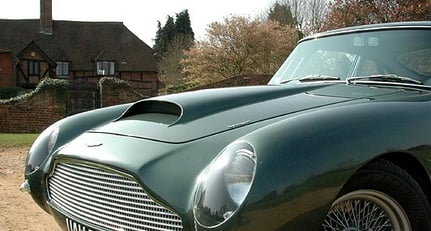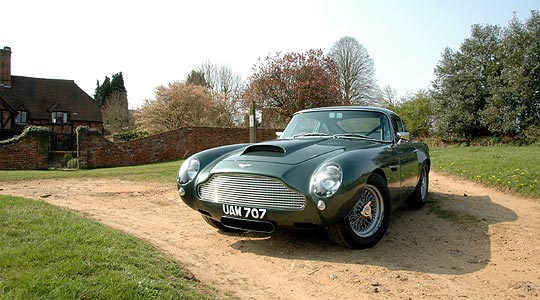
“This couldn’t happen today...” said marque expert Richard Williams as he ran down the spec sheet of the oh-so-special DB4, a car to headline the forthcoming Bonhams Aston Martin sale at Works Service.
The project was typical of the can-do, ‘Gauntlett-era’ at Aston Martin. In March 1990 DB4/207/R, an early DB4 in need of total restoration, was purchased with a view to using it as a rolling showcase by the Works Service team to demonstrate its restoration and re-engineering skills.
Registered ‘UAW 707’ (which it carries today), the donor DB4’s chassis was shortened by five inches and re-bodied to DB4GT specification, with a generally sporting air courtesy of original-type leather bucket seats, a six-point rollcage and widened rear wheel-arches. The latter are to cover new 16” wheels and considerably revised rear suspension. Which is where things get even more interesting.
Owners of six-cylinder ‘DB’ Astons in livelier stages of tune (let alone ‘lightweight’ Club racing cars ...) will know that a weak point of the original Harold Beach chassis was its live rear axle, lever-arm dampers and a Watt linkage with a less-than-perfect pick-up point. Axle-tramp in extremis, lack of traction, poor road-holding on bumpy roads and a wayward tail in spirited cornering were the result. Independent suspension – using principles established with the DBR1 and DP215 – would have transformed the cars' handling so, under the careful eye of Kingsley Riding-Felce, General Manager for Service and Parts, an ‘IRS’ solution was devised for the totally revised car, soon to be honoured with a ‘DP’ chassis number.
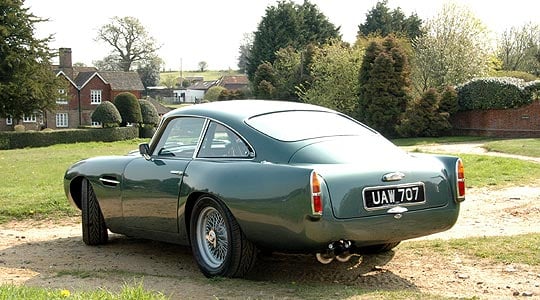
It wasn't just a case of giving DP2155 (the very last of the DB4-based ‘project cars’) an independent set-up at the back. The idea at the time was also to offer this conversion to owners of road (and Club racing) cars as a ‘bolt-on’ engineering solution which fitted onto the same locating points, without having to change or modify the car’s original structure.
As part of a complete re-working of the entire car’s underpinnings, the front suspension and steering geometry were likewise completely revised to eliminate bump steer and complement the work done at the back. In line with racing practice, adjustable Konis were matched with adjustable, rose-jointed (but rubber-mounted) top wishbones.
(If this is becoming a little ‘listy’, so be it – the Bonhams catalogue will reveal the total extent of the work done but the bound history file on the back shelf of the car – a typical Works Service touch – has it all. Right down to the last, almost £19,000 service and preparation-for-sale invoice from R.S. Williams this year.)
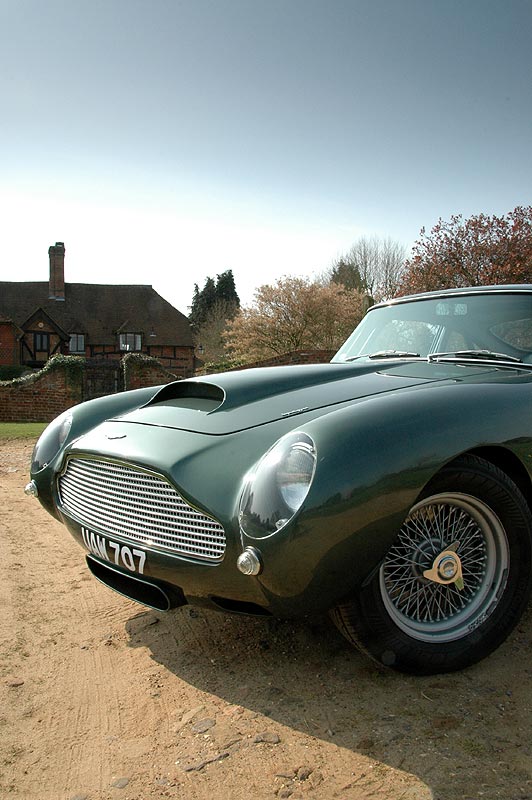 Under the bonnet, as the car was now a DB4GT variant in all but name, there now sits a proper twin-plug-head six, sporting a capacity of 4.7 litres. The extra litre comes from a fully counter-balanced, steel-billet crankshaft connected by Carrillo rods to Cosworth pistons sitting in bored-out liners. As a result, what might have been 270bhp at 6000rpm (261lb ft torque at 5000rpm) from a well-prepped 3.7-litre '4GT in the 60s has been replaced by 351bhp at 6000rpm and 334lb ft torque at 3500rpm – all attested by dyno sheets in the history file. Williams confirms that the level of tune provides a “fully road-usable, tractable engine. I expect we could build on that...” In line with all the other improvements, braking has been uprated, too – all-new 13” front discs and Brembo calipers (still servo-assisted) will slow the potent car from speed.
Under the bonnet, as the car was now a DB4GT variant in all but name, there now sits a proper twin-plug-head six, sporting a capacity of 4.7 litres. The extra litre comes from a fully counter-balanced, steel-billet crankshaft connected by Carrillo rods to Cosworth pistons sitting in bored-out liners. As a result, what might have been 270bhp at 6000rpm (261lb ft torque at 5000rpm) from a well-prepped 3.7-litre '4GT in the 60s has been replaced by 351bhp at 6000rpm and 334lb ft torque at 3500rpm – all attested by dyno sheets in the history file. Williams confirms that the level of tune provides a “fully road-usable, tractable engine. I expect we could build on that...” In line with all the other improvements, braking has been uprated, too – all-new 13” front discs and Brembo calipers (still servo-assisted) will slow the potent car from speed.
As you’d expect from any car built at Works Service and prepared by ‘RSW’, DP2155 is in quite beautiful condition. Flawless metallic green paint lies on straight-as-a-die panelwork. The interior has some lovely racing touches such as the seats, four-point, all-black safety harness and the surprisingly unobtrusive rollcage.
An original Aston Martin steering wheel, black-spoked with notched and riveted wooden rim, lies in front of the driver, now belted in and secure in the hugging, slightly too reclined buckets (Williams again: “the current owner wanted that - easy to adjust”). Starting is by key with a “hint of throttle... that’s it” and the engine enjoys an easy tickover. It’s so smooth – there’s no rattling, tinkling or gearlever waggling.
Turning out of Williams’ Cobham premises, innocuously located in prime Surrey real estate, the changes to the steering immediately make themselves felt: it’s nicely weighted, on the heavier side of normal compared with a modern car but far and away better than even a well-restored DB4/5/6. As the speed builds up, it gives more and more feedback to the driver with no play whatsoever.
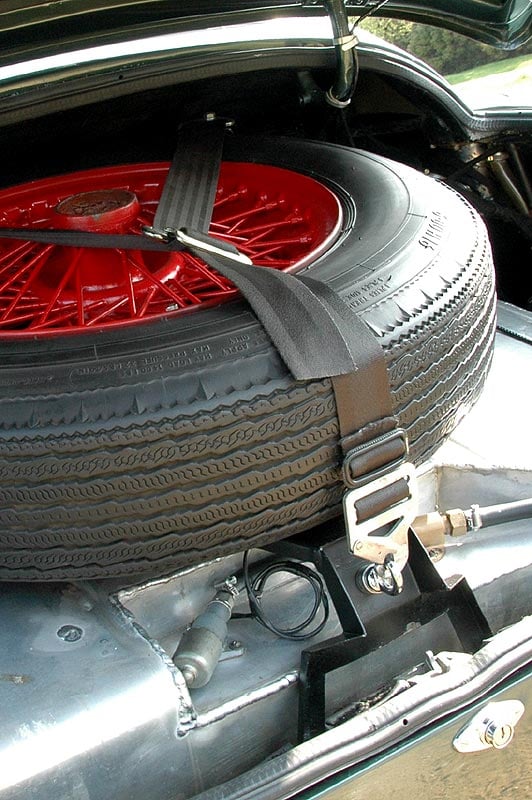
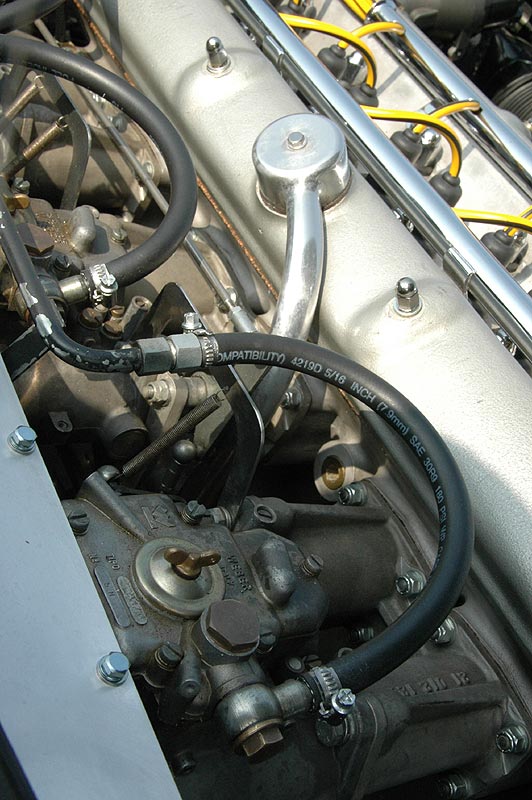
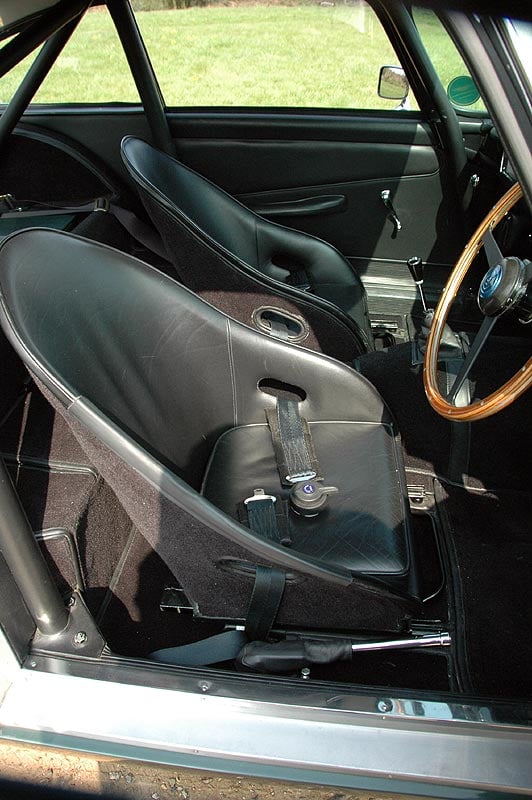
The engine is a masterpiece. Very, very smooth with the right degree of bark/gruffness/induction roar you’d expect from the all-alloy, Tadek Marek six-cylinder but with just a hint of the exotic technical improvements within. The specially fabricated exhaust gives enough emotion to the drive while never becoming intrusive. It also endows the car with ground clearance that would surprise a live-axle Aston owner.
Given the much increased performance of the engine and general ‘how we would have made the car better at the time’ principles behind the project, it made sense to replace the standard David Brown 4-speed with a ZF 5-speed gearbox from the DB5/6 era. The overdriven fifth gear provides relaxed cruising at 2500-3500rpm. Depress the light clutch, change down a gear and fully flatten the long-travel accelerator to the floor, however, and the small car is launched forward at a rate well into modern V8 Vantage territory. It’s very fast but, to repeat, very usable and not in any way a ‘racing car for the road’.
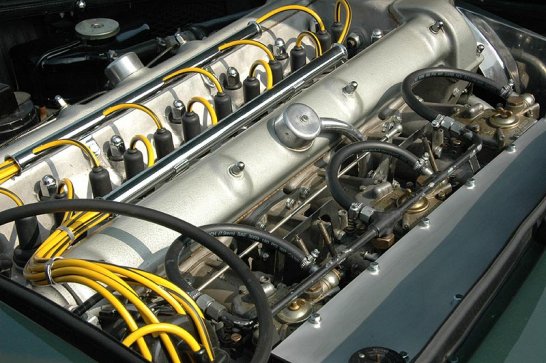
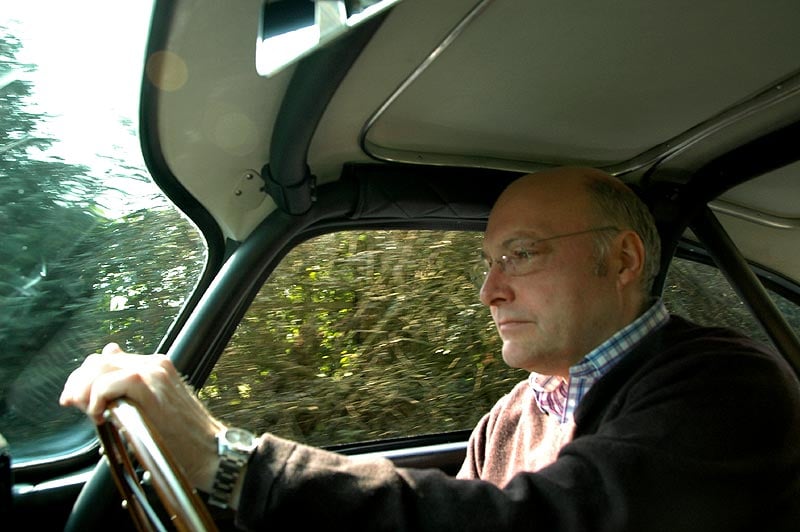
The all-new rear suspension fully justifies Riding-Felce’s decision to commence the project. Both the ride and road-holding are superb and when we pulled off the highway to try some rolling, bumpy B-roads, it stayed on the Tarmac like no other of its kind. The grip from the Yokohama AVS 225/60/16 tyres on plain, silver-sprayed steel wires (which I prefer to Borranis) is terrific.
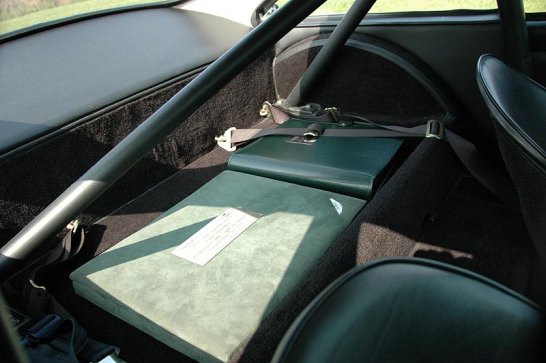
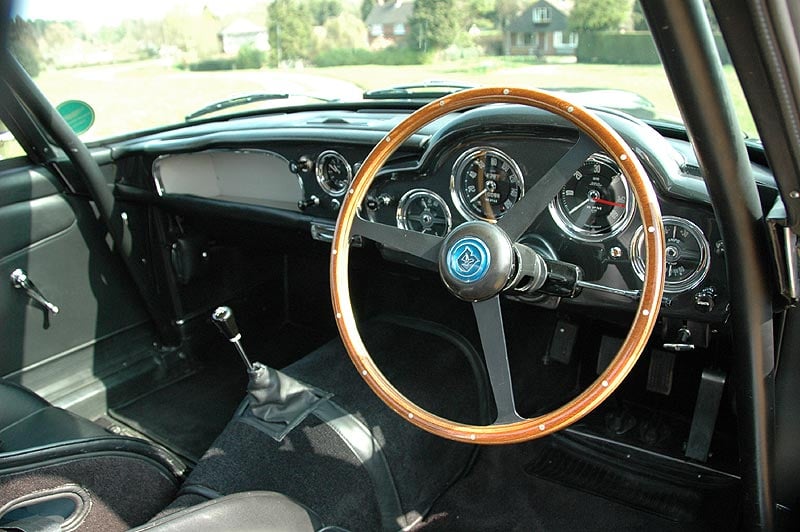
You’d have to be very silly to lose this on a dry road and, if in the mood, a track day or proper long-distance road rally would be an enjoyable experience. And there are no rattles, squeaks or groans from the car described as “ready to go” by Richard Williams. Looking round the airy Aston Martin cabin, the rollcage is easily removable but I’d keep it – nothing obscures the rear-view mirror, it adds stiffness to the chassis and has obvious safety benefits should the worst happen.
Referring to DP2155, Kingsley Riding-Felce has said, “Of all the DB heritage cars this is the one I would like to own more than any other.” Well, Kingsley, dig deep on May 22 and you could realise that dream.
The car will be sold at the annual ‘Works Service Sale’ that day and carries an estimate of £280,000 – 320,000.
You can now view all the motor car entries online in the Classic Driver car database, or see a full lotlist HERE.
|
Bonhams Motor Cars Dept.
101 New Bond Street London W1S 1SR UK www.bonhams.com Tel: +44 (0)20 7468 5801 Fax: +44 (0)20 7468 5802 Email: [email protected] |
Text - Steve Wakefield
Photos - Classic Driver
ClassicInside - The Classic Driver Newsletter
Free Subscription!
